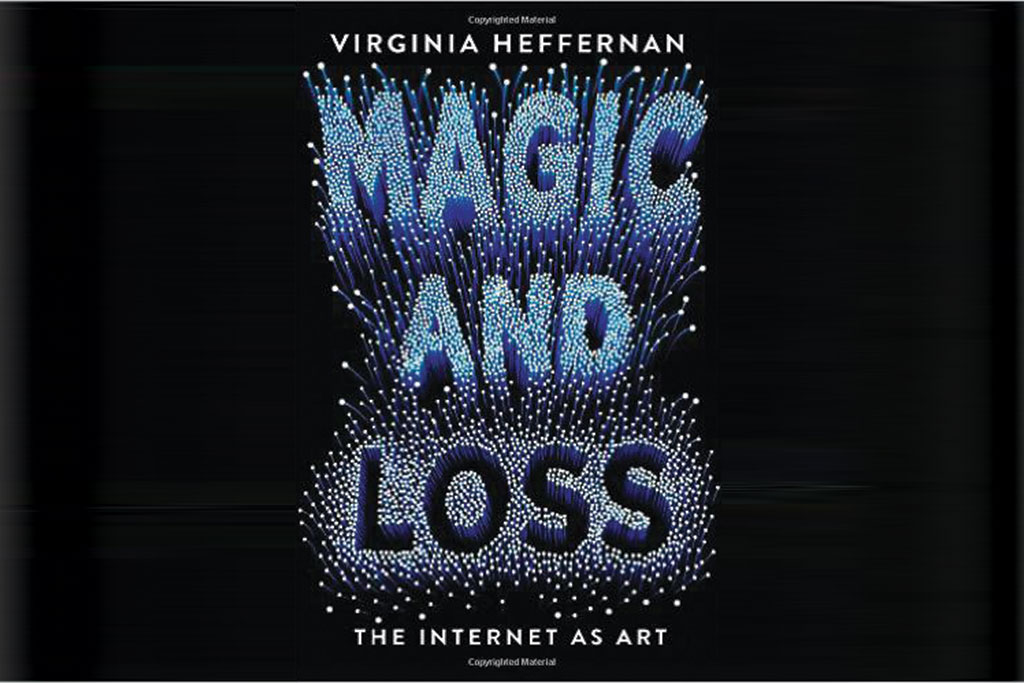
On Trails: An Exploration
Whether perambulating or cogitating, if you love to follow a twisting path, making unexpected connections between point A and Point B, you’ll love the literary adventure of nonfiction writer Robert Moor’s compelling debut On Trails: An Exploration (Simon & Schuster, $25 www.robertmoor.com). Moor, an elegant essayist and fastidious researcher found himself drawn to his subject while hiking the Appalachian Trail. While most would find the physical rigor of that task a sufficient challenge in itself, Moor was intellectually engaged as well: “Mile after mile, month after month, I had little else to do but study the trail beneath my nose with Talmudic intensity…as hundreds—and then thousands—of miles passed, I began to ponder the mean- ing of this endless scrawl. Who created it? Why does it exist? Why, moreover, does any trail?” The polymathic Moor finds him- self branching out of Appalachia to explore the natural history of trailblazing, from the cleverly regimented paths of ant colonies to the well-trod routes of elephant troupes, the economic impact of trail and roadbuilding in early America, the interrelation-
ships between technology and nature, and our use of the trail as a guiding metaphor in notions like ‘finding one’s path through life.’ Chockful of historical trivia, philosophical musings, and an unflagging sense of joy in winding one’s way through both the outdoors and inner self, Moor’s multi- dimensional exploration earns him a place on the map of writers to watch.
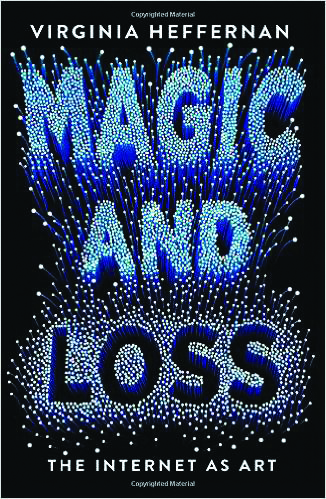

Magic and Loss: The Internet as Art
Today, it’s unlikely that any set of trails influences the world more than the Internet’s zipping digital network of connections. In Magic and Loss: The Internet as Art (Simon & Schuster, $26. www.vpheffernan.com), Virginia Heffernan, a brainy, pop-besotted former cultural critic for The New York Times intertwines her own history of Internet use with big-picture perceptions of the net’s impact on society as a whole. Have web-connected devices tapped into a natural human preference for visual rather than verbal communications? Heffernan notes the demise of the BlackBerry and rise of the physical keyboard-free smartphone, which she points out “is relatively hard to type on…” but “has an extremely good camera that takes beautiful pictures.” As further support, while musing on Instagram, she suggests that “superstylized images have become the answer to “How are you?” and “What are you doing?” Rather than cynically dismissing it as a timesuck or a distraction from deep thought, Heffernan embraces the internet and many of the alterations it has made to modern life. She’s a celebrant, not a scold, and her intellectual observations lead to her heartfelt conclusion that the Internet is a grand creative project on which we are all collaborators.
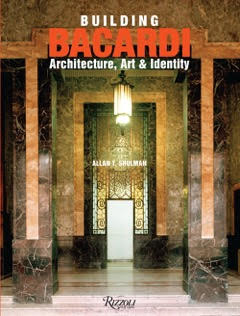

Building Bacardi
Call it marketechture. Allan T. Shulman’s profusely illustrated coffee table book, Building Bacardi (Rizzoli, $60. www.rizzoliusa.com) is an eye opener of the history of the liquor company’s use of architecture to establish and reinforce its brands. “From the company’s beginning,” Shulman (an architect and design professor) writes, “architectural expression has been a key component of the Bacardi business plan.” During the Prohibition era, Americans flocked to Havana for boozy Cuban vacations where, Shulman notes: “The gild- ed bat atop the Bacardi Building led them to one of the city’s most famous landmarks…the building loomed not just above the sky-line, but in the imagination…rum was part of an idealized vision of Cuba. The company encouraged this association.” Shulman demonstrates how, from bar rooms to office towers to distilleries and bottling plants, Bacardi uses architecture as a communication tool, radiating different messages in different locations through the thoughtful deployment of trendsetting architects including Mies van der Rohe and Philip Johnson. Bacardi is historic and folkloric when selling its mythos to consumers, bold and modernist when making aggressive statements in the corporate world. Even if one never visits one of the buildings analyzed in the book, Building Bacardi will sharpen travelers’ vision with a new lens for looking at architecture.
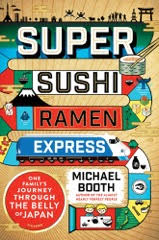

Super Sushi Ramen Express
All aboard the Super Sushi Ramen Express (Picador, $26. www.michael-booth.com), Michael Booth’s bite-seeing tour through con- temporary Japanese cuisine. In funny, anecdotal chapters, many of which focus on a single type of food, Booth, a Denmark-based travel writer sinks his teeth into the sort of unvarnished cultural-culinary reporting that made Calvin Trillin a star three decades ago. Visiting a miso factory, he wonders “What was that appalling smell of backed-up toilets?” before ultimately becoming a supporter of the fermented soy paste that “as with so many of the tastiest foodstuffs both repelled and intrigued in equal measure.” Along with noodle lore, seaweed stories, and raw fish raconteurism, Booth cheekily delves into aspects of Japanese eating less familiar to American readers. From a discussion of what makes one soy sauce better than another to a visit to a wasabi farm (that’s right…it doesn’t start out as a tube of green paste!), Booth whistle-stops his way through Japan making toothsome observations all the way.
AIRPLANE READ OF THE MONTH
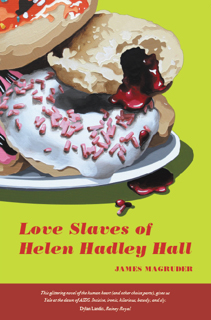

Love Slaves of Helen Hadley Hall
James Magruder’s last visit to our bookshelves was as the author of Sugarless, one of the best gay young-adult novels in recent years. So it’s a pleasure to welcome him back with a richer, more explicit read for mature audiences. Grown-ups, get giddy: Love Slaves of Helen Hadley Hall (Queen’s Ferry Press, $16.95. www.jamesmagruder.com) is a hoot. An ambisexual tangle of Yale graduate students flirts and frolics its way through an academic year of cohabitation in the titular dormitory. That the year happens to be 1983-4, with AIDS itchily top-of-mind, adds a poignant, strangely nostalgic tone to what is essentially a bawdy comedy. But what truly distinguishes this novel is its plummy narrative voice. Magruder, also a translator of classic European drama, tells his story through the oh-so-campy diction of deceased dorm namesake Helen Hadley, whose spirit watches over the youngsters and their quarters. “The air was thick with the smell of blown tiger lilies and the echoing calls of tipsy undergraduates,” Helen tells us as the story builds momentum, adding further perfect atmospheric detail as one protagonist enters a classic 80’s gay bar: “…Donna Summer and Blondie caterwauling above, and everywhere a tangy miasma of smoke, desire, sweat, poppers, and urinal pucks.” The storytelling is altogether enjoyable, but it’s the storyteller that gives this book its irresistible glow.


